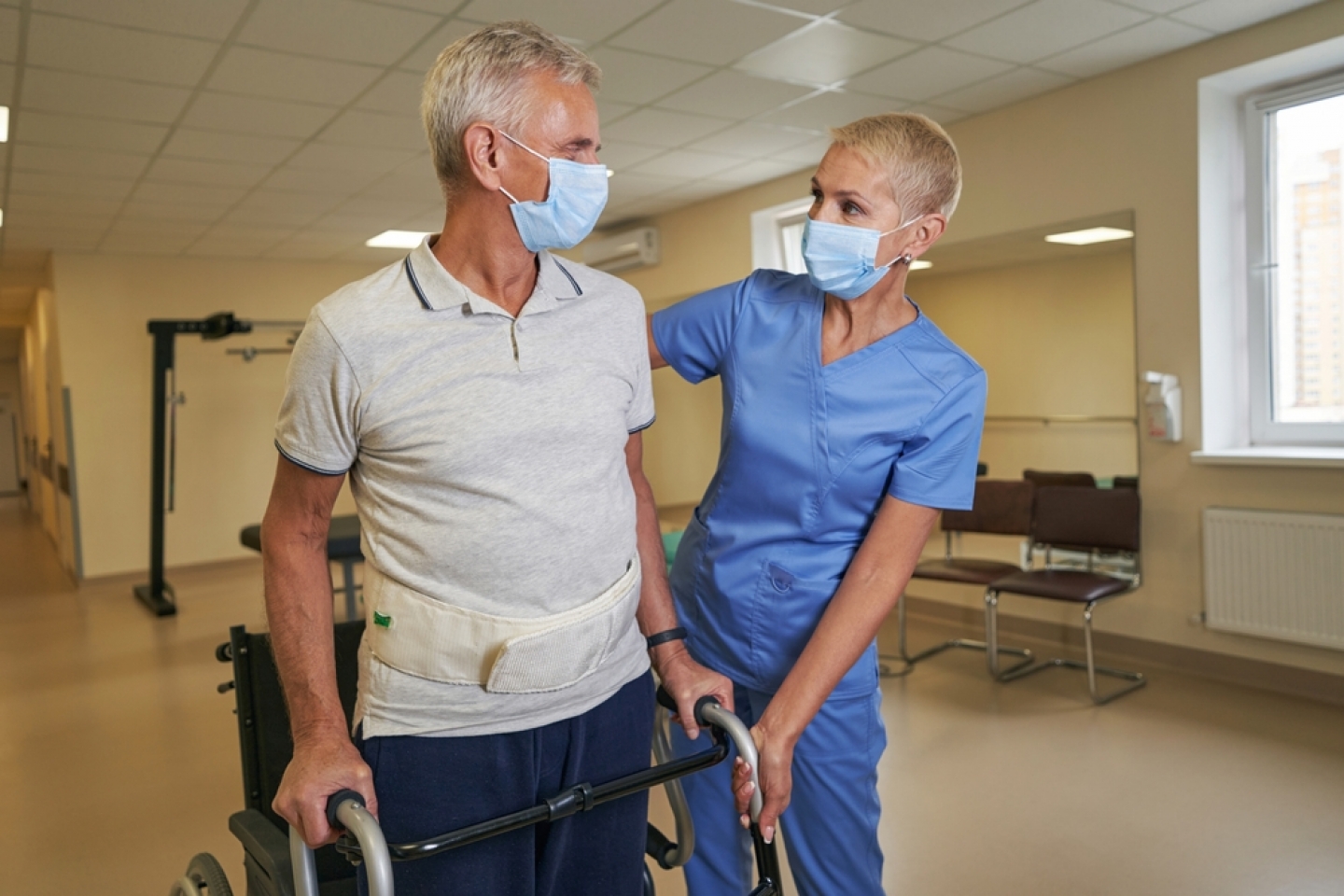
Take time to learn about the signs and symptoms of stroke, along with its causes, risk factors and treatment.
Many of you already know the acronym BE FAST, but just in case you could use a refresher, here it is.
BE FAST is a mnemonic—a device to help you remember the symptoms of a stroke, whether these occur in yourself or in someone else.
If you see or experience any of the signs of a stroke outlined above, call 911 immediately, urges Dr. Saad Abdul Sami Mir, Associate Medical Director of NewYork-Presbyterian’s Mobile Stroke Treatment Unit, Site Chief and Stroke Director at NewYork-Presbuterian Lower Manhattan Hospital and Assistant Professor of Neurology at Weill Cornell Medicine.
Don’t be tempted to get to the hospital yourself, he warns. Leave that to the paramedics. “When they arrive, they will provide acute stroke treatment and make sure to take the patient to the right hospital,” depending on the nature and severity of the stroke.
As well, NewYork-Presbyterian’s Mobile Stroke Treatment Unit may be summoned. Says Dr. Mir, “The unit has ambulances equipped with CT scanners and cameras that allow a vascular neurologist to assess the patient before arriving at the hospital,” saving at least 30 minutes in the process.
He goes on to explain why time is of the essence. When blood flow to the brain is disrupted, often by a blood clot, that can be the start of a stroke. Such disruption might affect the part of the brain that controls vision, speech, balance, strength or a host of other functions. And the stroke syndrome takes off rapidly from there. The brain proceeds to lose oxygen, and its tissues become vulnerable to injury.
“We can offer a medication, called a tissue plasminogen activator (TPA), that can break up clots and salvage brain tissue, but it must be given within a certain time frame—about four and a half hours from the onset of symptoms,” he adds. That, in a nutshell, is the rationale for the “T” component of BE FAST.
The controllable risk factors for a stroke are the same as those for a heart attack:
And then there are risk factors that lie beyond our control: those pertaining to age, race, gender and heredity.
Focus on what you can control, Dr. Mir advises: “See your primary care physician. Make sure your blood pressure, cholesterol and blood sugar levels are controlled with medication. Don’t skip doses. And exercise 4 to 5 times a week. We recommend a moderate-intensity exercise regimen that makes you breathe hard and sweat a little.”
As for nutrition, Dr. Mir favors the Mediterranean diet, which is low in saturated fat, salt and sugar and rich in fruits and vegetables, legumes, nuts, whole grains and low-fat dairy products, with some fish here and there.
To cut your stroke risk down to size, eliminate tobacco in all forms from your life, including vaping and chewing varieties.
Moderate alcohol consumption to the tune of one glass of wine a day may be permissible, but the jury is still out on that one. It may be safer to avoid alcohol altogether, says Dr. Mir, especially given the magnitude of the challenges posed by stroke for individuals and society as a whole.
“We think about stroke in two ways: It’s either a clot or a bleed,” Dr. Mir says. “The clot type is far more common. About 85 percent of the time, people have clots, and 15 percent of the time, they have bleeds.
“But regardless of the type of stroke, it’s a huge problem,” he continues. “Approximately 800,000 people in the U.S. per year have a stroke. It’s the leading cause of medical disability nationwide, generating $46 billion in health care-related costs and lost productivity annually.”
The scope of the problem is truly enormous, which is why raising awareness is a prime objective for both the American Heart Association and the American Stroke Association, especially in May, which is National Stroke Awareness Month.
According to Dr. Mir, stroke recovery varies widely from patient to patient. Some are admitted to the hospital with a stroke but soon revert to normal, have no residual symptoms and are free to go home. Of course, they need to be followed by their medical team and to adopt a solid preventive health plan to keep the possibility of another stroke at bay.
Some patients emerge from a stroke with minimal deficits such as mild weakness in the arm. Patients in this group can have outpatient physical therapy to recover some or even all of their strength and functionality.
And some patients require extensive rehabilitation in an acute care facility, where they will be offered intensive physical, occupational and speech therapy.
Dr. Mir’s parting advice? “Become familiar with the risks, and work with your doctors to downsize or even eliminate them.”